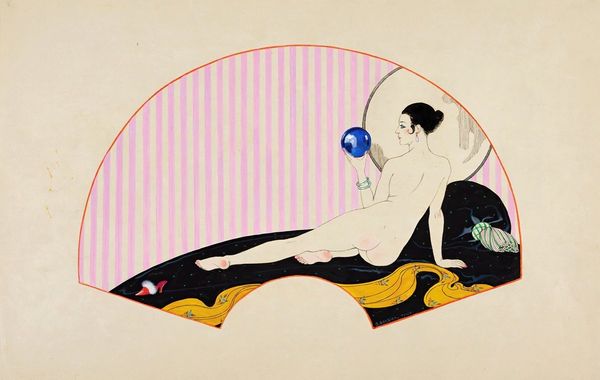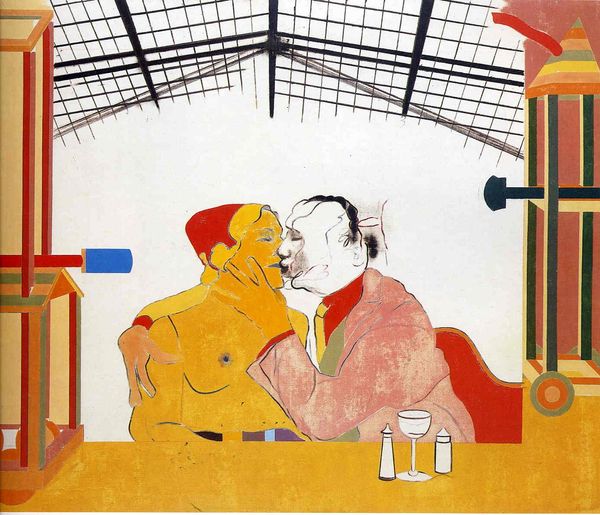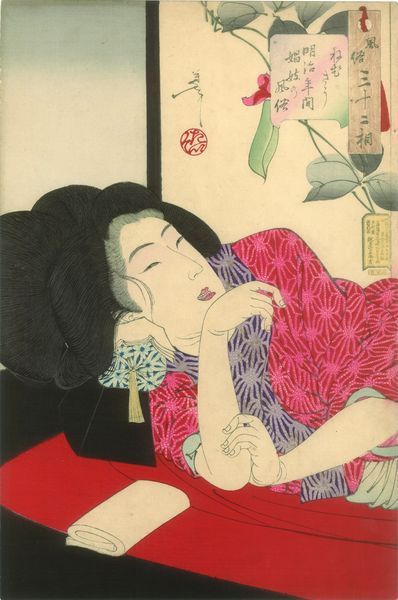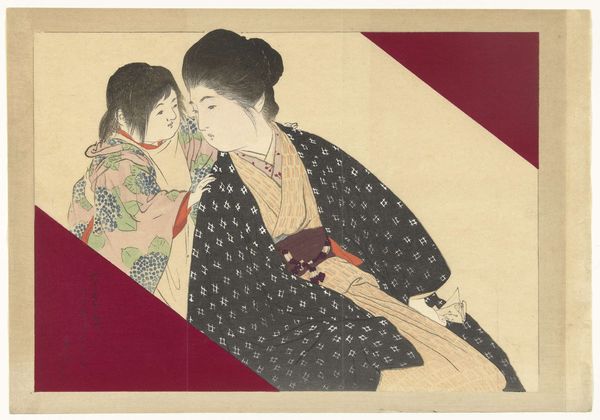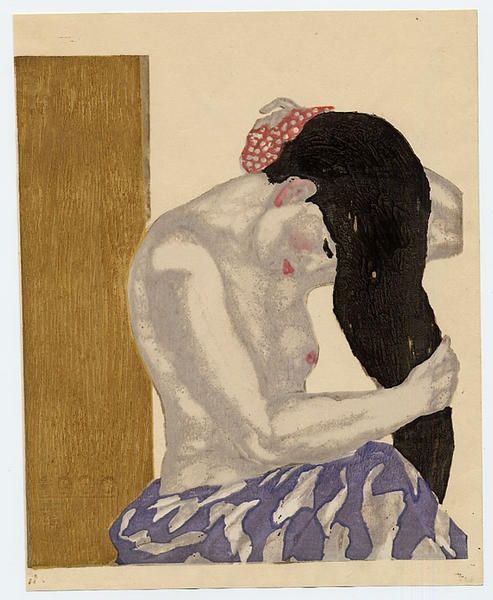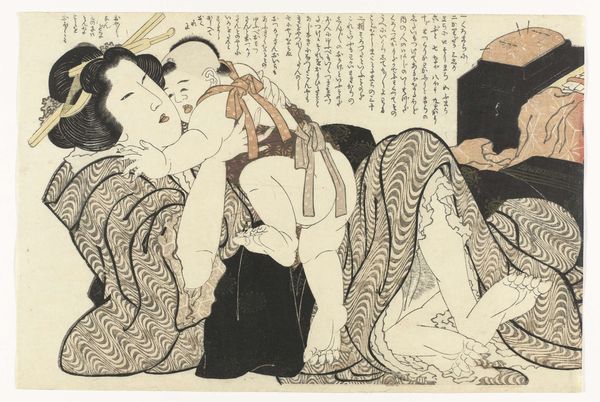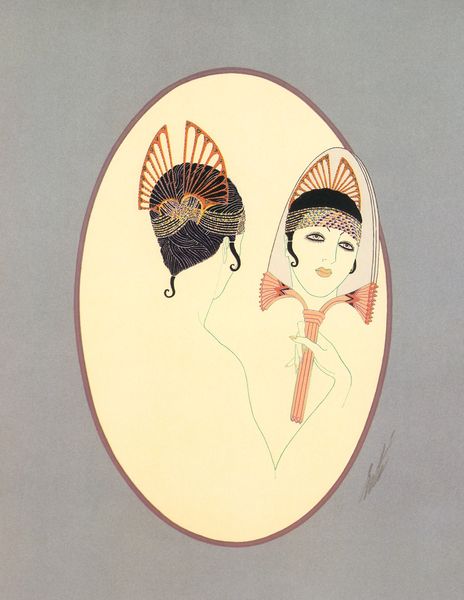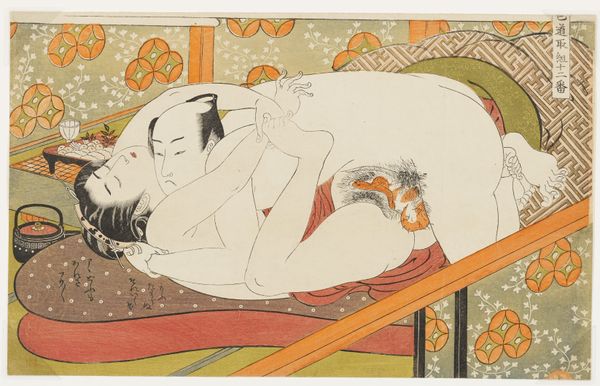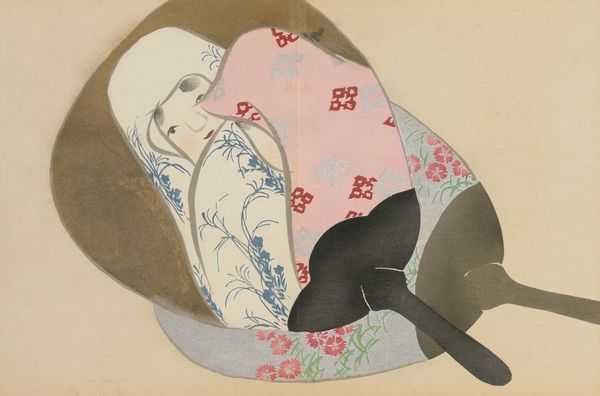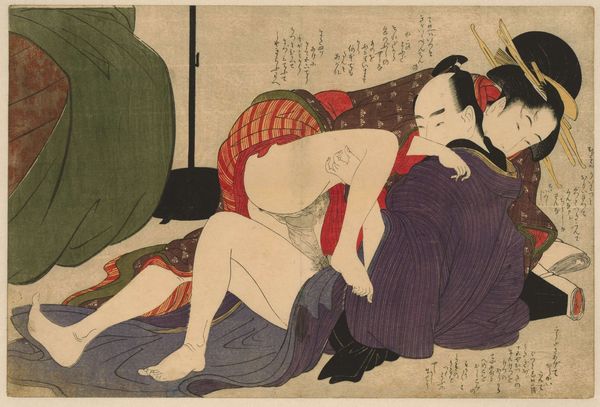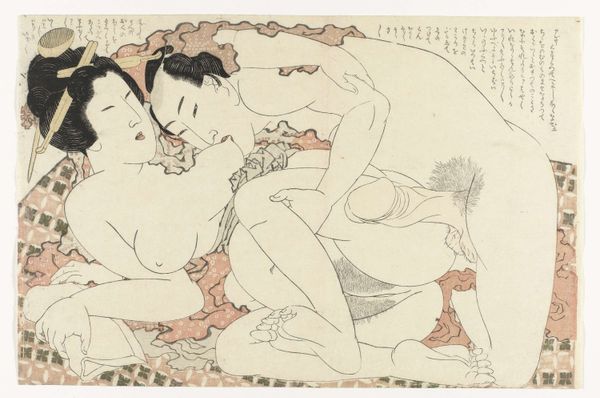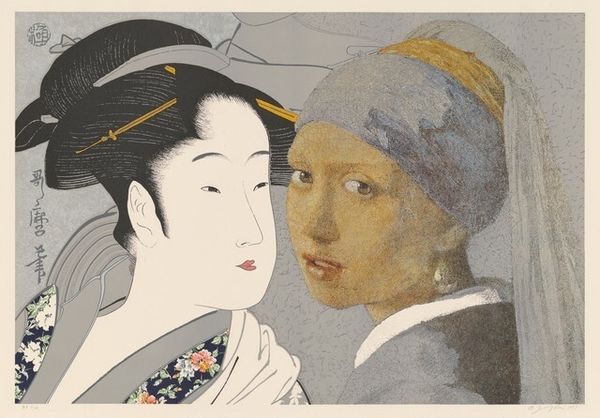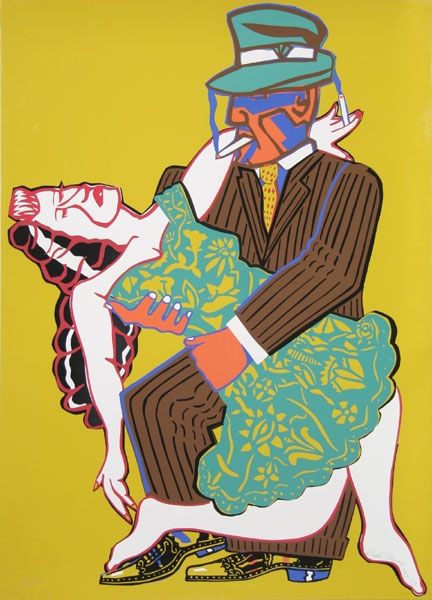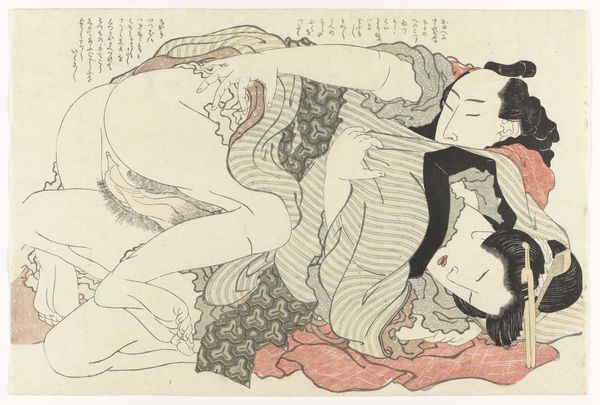
Copyright: Public Domain: Artvee
Henri de Toulouse-Lautrec created this print, Reine de Joie, using lithography, a printing process that democratized art in the late 19th century. Lithography allowed artists like Toulouse-Lautrec to create multiple original images, blurring the line between high art and commercial design. The process involves drawing on a stone or metal plate with a greasy crayon, then applying ink that adheres only to the drawn areas. This printmaking technique enabled the mass production of posters and illustrations, and consequently, the proliferation of art in everyday life. Notice how the flat planes of color and bold lines are inherent to the lithographic process. The stark contrasts and simplified forms were easily reproducible, catering to the demands of advertising and consumer culture. Toulouse-Lautrec’s engagement with lithography reflects a broader shift in the art world, one where the handmade and the mass-produced coexisted, influencing each other. The image is not merely a representation, but also an object produced within a specific social and economic context, challenging traditional notions of artistic value.
Comments
No comments
Be the first to comment and join the conversation on the ultimate creative platform.
